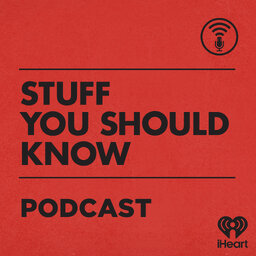Space Weather - What's That?!
Did you know space has weather? It’s true! In our solar system, tons – literal tons – of highly charged gas and magnetized particles spew from the surface constantly, causing all sorts of weird stuff here on Earth. So far, nothing too bad has happened.
Learn more about your ad-choices at https://www.iheartpodcastnetwork.com
 Stuff You Should Know
Stuff You Should Know


